
Identifying and managing IVIG-related side effects early on in treatment can improve efficacy and safety for patients with CIDP.

Identifying and managing IVIG-related side effects early on in treatment can improve efficacy and safety for patients with CIDP.
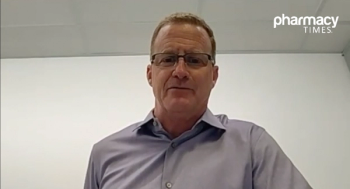
Phil Vigeant shares insights on the health benefits of protein supplements and guidance for consumers to identify safe and effective protein powder products.

Donna Ryan explains why long-term treatment with GLP-1 medication is typically necessary to maintain weight loss benefits.

Future research can explore the underlying cause of recurrent pericarditis with systemic Sjögren syndrome and the combination of rilonacept with immunosuppressive therapies.

Steven Pipe, MD, explains the long-term efficacy data surrounding etranacogene dezaparvovec in patients with hemophilia B.
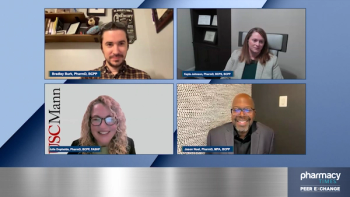
Panelists discuss how the TD patient journey often begins with subtle symptoms that may go unrecognized, particularly in older adults who face unique challenges with diagnosis and treatment, while emphasizing the crucial role pharmacists play in early identification through medication reviews, regular monitoring of patients on antipsychotics, coordination with healthcare providers, and ongoing assessment of treatment response and adherence.

Panelists discuss how barriers to optimizing TD therapy include insurance coverage limitations, high medication costs, delayed diagnosis, lack of provider awareness, and stigma associated with movement disorders, while highlighting strategies like patient assistance programs, early screening protocols, provider education initiatives, and collaborative care models to overcome these obstacles and improve access to effective treatment.

Pharmacists can help educate patients, identify adverse events, and help patients communicate with other health care professionals or drug companies.

Andrew Lin, PharmD, BCOP, discusses his pharmacist-led study examining the association between early tacrolimus levels and outcomes post-allogeneic hematopoietic cell transplantation.

Panelists discuss how health care professionals collaborate through interdisciplinary teams, integrated care coordination, and life cycle-specific approaches to provide comprehensive women’s health care, addressing gaps by implementing patient-centered, culturally sensitive models that prioritize holistic well-being across different life stages.

Panelists discuss how menopause marks a significant life transition, characterized by hormonal decline, reproduction cessation, and unique physiological changes requiring medical and emotional support. Health care professionals guide women through life’s reproductive stages, providing comprehensive health care from menarche to post menopause, focusing on individualized prevention of symptom management, and holistic well-being across hormonal transitions.

Panelists discuss how menopause marks a significant life transition, characterized by hormonal decline, reproduction cessation, and unique physiological changes requiring medical and emotional support. Health care professionals guide women through life’s reproductive stages, providing comprehensive health care from menarche to postmenopause, focusing on individualized prevention of symptom management and holistic well-being across hormonal transitions.

Molly Schiffer, PharmD, BCOP, discusses the logistical, operational, and financial challenges of delivering cellular therapies in the outpatient setting, focusing on CAR T-cell therapy, TIL therapies, and emerging trends in non-oncology applications.
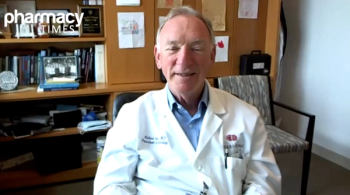
Richard Lewis discusses the critical role pharmacists and health care providers play in ensuring safe administration of IVIG for patients with CIDP.

Pharmacists should educate patients on abelacimab's potential therapeutic impact on atrial fibrillation patients at risk of stroke.

Zahra Mahmoudjafari, PharmD, BCOP, FHOPA, discusses the logistical challenges and interprofessional strategies essential for delivering cellular therapies in outpatient settings, emphasizing the pharmacist's role in improving patient outcomes and addressing health disparities.

Proper nutrition and awareness of potential side effects from GLP-1 medications are essential for patients undergoing treatment.

Panelists discuss how TD treatment can be optimized through individualized approaches that consider patient-specific factors like symptom severity, comorbidities, concurrent medications, and daily routines, utilizing tools like titration kits to carefully adjust VMAT2 inhibitor dosing while monitoring response and tolerability to achieve the best possible outcomes for each patient.

Panelists discuss how managing tardive dyskinesia in patients with comorbid mental health conditions requires a delicate balance between treating TD symptoms while maintaining psychiatric stability, emphasizing the importance of coordinated care between psychiatrists and movement disorder specialists to optimize medication regimens, monitor for potential drug interactions, and address the complex interplay between physical symptoms and psychological well-being.

Molly Schiffer, PharmD, BCOP, discusses the logistical and operational challenges of delivering outpatient CAR T-cell therapy, emphasizing the benefits of outpatient treatment, including reduced costs, improved access to therapy, and better quality of life for patients.

Ming-Hei Tai, PharmD, BCOP, shares his concerns about the AQUILA trial and use of daratumumab for smoldering multiple myeloma.
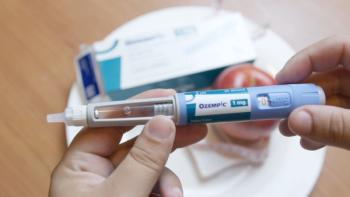
Donna Ryan discusses the landscape of GLP-1 medications and the lineup of indications that the drug class has received indications for in recent years.

Edward Kim, MD, MBA, discusses critical points of patient leakage in precision medicine, emphasizing the role of multidisciplinary teams in streamlining care, managing medications, and improving patient outcomes.

Edward Kim, MD, MBA, highlights the challenges of patient disengagement, data fragmentation, and provider education in precision medicine, emphasizing the need for personalized approaches to enhance patient outcomes, particularly in oncology.
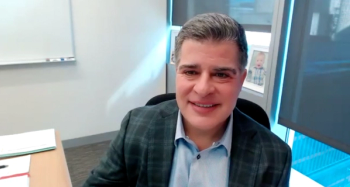
Christian Ruff explains the strong efficacy associated with abelacimab compared with rivaroxaban in the AZALEA-TIMI 71 trial.

Panelists discuss how recent FDA regulatory actions regarding obeticholic acid have raised concerns about its long-term safety profile and accessibility, leading health care teams to develop strategies for supporting patients through treatment transitions while navigating insurance coverage and access challenges for newer primary biliary cholangitis (PBC) therapies.

Tocilizumab-anoh is expected to increase competition, improve patient access, and deliver cost savings in the treatment of various inflammatory conditions.

Three experts from UPMC Health Plan highlight the importance of treating patients’ physical, mental, and social health when managing diabetes, rather than the disease alone.

Naga Vara Kishore Pillarsetty, PhD, discusses advancements in radiopharmaceuticals for cancer therapy, noting common supply chain challenges, radiation safety measures, and patient misconceptions with the use of these drugs.

Panelists discuss how VMAT2 inhibitors' most commonly reported adverse effects include somnolence, fatigue, and mild parkinsonism symptoms, which can typically be managed through dose adjustments and careful titration strategies, while noting these side effects are generally less severe than those of older treatments and rarely lead to discontinuation when patients are properly monitored and educated about expectations.